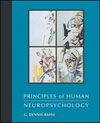We turn now to a consideration of the most important methods in neuropsychology, many of which we have already touched on in our earlier discussions. The data generated by these diverse methods are the soil out of which fruitful hypotheses, illuminating experiments, and novel theories are generated. It is therefore very important to understand the methods that are the basis for the inferences that experiments generate. Like the evil genie in the fairy tale who grants only the precise wish requesters ask for and not the wish they think they are making, nature answers precisely and only the question defined by the methodology of a particular experiment. This is not always the question we think we are asking. In what follows we will consider (a) methods used to explore the nervous system's structures and its pathways of interconnection; (b) methods that measure functional aspects of the nervous system, such as level of glucose utilization or electrical activity; (c) lesion methods; (d) the study of patients who have undergone split-brain surgery; (e) the sodium amobarbital test; (f) the study of behavioral and cognitive abnormalities in people without detectable brain lesions; and (g) the study of normal human subjects. | 


 2002 McGraw-Hill Higher Education
2002 McGraw-Hill Higher Education